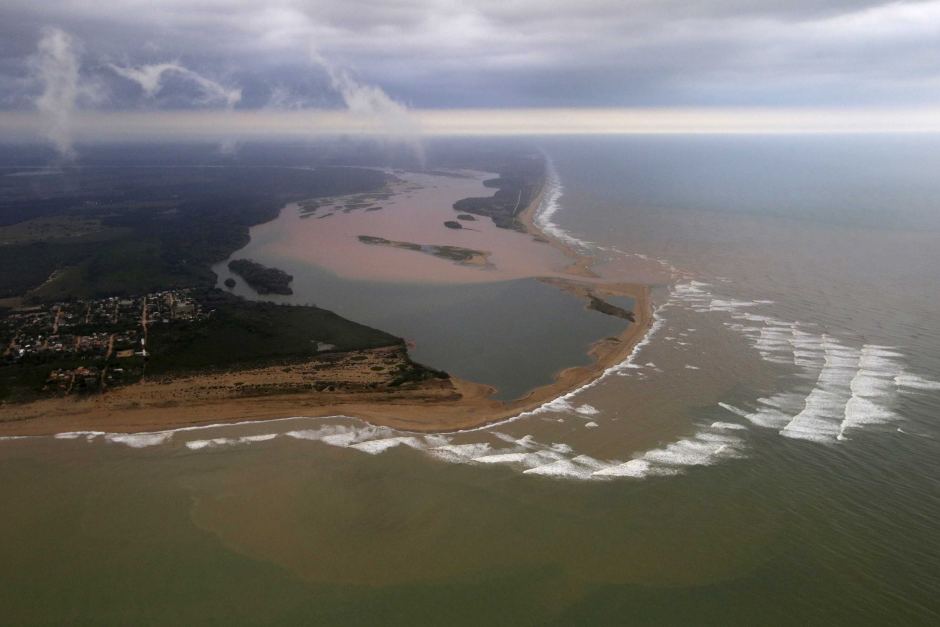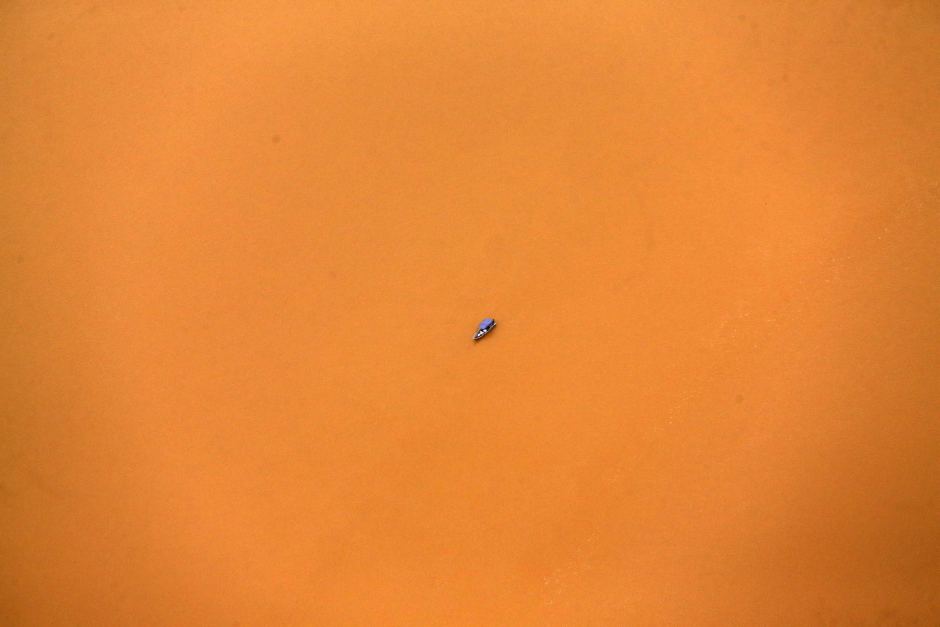
© Reuters: Ricardo Moraes
A torrent of toxic mud from a deadly mine spill in south-west Brazil that buried a village and contaminated a river basin has reached the Atlantic Ocean.
The waste has travelled at least 500 kilometres since the dam burst more than two weeks ago, killing at least 12 people and leaving 280,000 without water.
“Our objective is to reduce the environmental damage, to mitigate as much as we can,” said Luciano Cabral, a municipal biologist working in the area.
“We’re united with the same objective to minimise the inevitable impact.”
The disaster struck when a dam collapsed at the waste reservoirs of an iron ore mine owned by Samarco, a joint venture between the mining giants BHP Billiton of Australia and Brazil’s Vale.
A torrent of yellowish muck burst from the tailings pond, mostly destroying the nearby village of Bento Rodrigues and contaminating the water supply to more than 200 towns.
Twelve people are still missing.

© Reuters: Ricardo Moraes
The mine consortium has laid nine kilometres of floating barriers to try to protect plants and animals from the mud, which is full of heavy metals.
The spill contaminated a river basin and has been described by Brazil’s environment minister Izabella Teixeira as the worst environmental disaster in the country’s history.
Ms Teixeira estimated it would take 30 years to clean up the Doce basin after the mud smothered thousands of fish, turtles and other animals.
“It’s clear what happened in the Doce River is the biggest environmental catastrophe in this country’s history. We can’t let it happen again anywhere,” Ms Teixeira told newspaper O Globo.
“Our current environmental laws are insufficient to deal with an accident of this magnitude.”
The mud and mining waste have travelled across hundreds of kilometres of river in the states of Minas Gerais and Espirito Santo and were expected to reach the Atlantic Ocean on Friday or Saturday.
Brazil’s president Dilma Rousseff has said the government holds all three mining firms — Samarco, Billiton and Vale — responsible for the disaster.
Samarco has already been hit with damages, fines and frozen funds totalling more than $400 million.
The clean-up could cost more than $1 billion, according to Deutsche Bank.
Renowned Brazilian documentary photographer Sebastiao Salgado, whose foundation has been active in efforts to protect the Doce River, toured the area and submitted a $27 billion clean-up proposal to the government.
“Everything died. Now the river is a sterile canal filled with mud,” he told O Globo.